[Dr. Richard Page, Chair, Department of Medicine, UW School of Medicine and Public Health]
Today’s program is a little bit different. Craig and I always would kind of have a theme, but we’ve had a number of areas that are just really exciting going on at the School of Medicine and Public Health that we wanted to highlight. And we came up with the idea of having a session just called “Innovations” without necessarily a theme following a patient or or whatever but identify areas that are just so exciting that we wanted to share them with you.
So, today’s session is called “Innovations in Medicine.”
So, I have the pleasure of introducing our first speaker, Carla Pugh.
Carla holds the Susan Behrens Professorship in surgical education and is clinical director of the UW Clinical Simulation Program. She’s a graduate of UC Berkeley and then took her MD degree at Howard University, where she then went on for a residency in surgery.
She then went and got a PhD in education at Stanford before being recruited to Northwestern. And I met her as she was being recruited and was amazed at at the innovation and the talent and the vitality she brings to her area.
During that negotiation, as Craig and Bob were working to to recruit her, she was named a Presidential Early Career awardee. And I think one of her visits had to be postponed while she went to the White House. At that point I thought: “Oh, no, we’re never going to be able to recruit Carla Pugh.” But indeed, thanks to Craig and Bob and I don’t know what it took, but it was worth it they were effective in recruiting Dr. Pugh to to the Department of Surgery.
So, she is now going to provide our first talk, which is about education innovation. We are a school of medicine and public health, and this is entitled “A Surgeon in an Engineer’s Body: The Quest for Performance Measurement.” Please join me in welcoming Dr. Pugh.
[applause]
[Dr. Carla M. Pugh, Professor, Department of Surgery, UW School of Medicine and Public Health]
Thanks, Rick, for that very kind introduction.
Can you all hear me? I will try to make sure that I speak very loudly.
It’s very clear that we are embarking on an era of information access. And not just any information, ladies and gentlemen, it’s personal.
Vital signs, your golf swing, and even surgeons can collect data and information about what they’re doing in the operating room.
This is very seductive, and I have joined the craze.
This is not a fashion statement. This ring collects information about my every move, and I am waiting to see the difference between what it looks like when I’m on call for a week versus when I’m writing grants to do the research I’m going to talk to you about today.
And this is my team. Obviously, no research gets done alone. I have a research team that includes undergraduates, medical students, residents, and PhD post docs in engineering, kinesiology, robotics, and I am very, very excited and humbled to have this team of really exciting people that love the work that we do.
And we consider ourselves as being in the business of developing technologies that bring high value information and high quality feedback to medical professionals who want to learn and be the best in their craft. We’re called the SEnSE Lab. It sounded really good because of sense and sensors, which I’ll get into, but we’re broadly working well beyond surgical education, as you’ll see.
All the technology I’ll present today relates to medical students and residents in any specialty.
And again, we use advanced engineering technology to measure hands-on performance. So, while I think my research is really, really cool and I’m very excited about it and I love spending time going through all these mathematical algorithms, I openly admit that this one slide tells the whole story.
[laughter]
And that story is that novices, when you put motion tracking and sensors on them, their signals are messy, and the experts are a little less messy.
[audience member]
Whats the word?
[Dr. Carla Pugh]
Messy. It’s really Im I’m using a Im Im using a a layman’s term. So, it looks like scribble-scrabble. It’s just messy. But I’ll Ill get some specific details, and thanks for your question.
So, I’ll go to a specific clinical procedure, which is an intubation, and that’s what anesthesiologists, emergency medicine, ambulance, emergency providers, they use this procedure. This a laryngoscope. And that enables them to see the airway and put a breathing tube in to help someone breathe.
What we’ve done with the training mannequins there are a number of mannequins on the market we buy them all and we put sensors on the inside so that we can actually collect really detailed information about what people are doing. And, again, nice signal, messy signal. And with this what I really mean by that is that you see more movement there. The first thing I had to do was actually squeeze the novice intubation so that it could fit on the screen. It took three times as long. And, actually, by the time the novice got the laryngoscope in the mouth, the expert was finished.
This has this has this has given us more information than we’ve ever had in terms of the amount of detail. Every second: what is it that they’re doing? Where can we find a place to help them improve?
This is another simulator. Just learning how to put in sutures. We actually have these similar suture boards for the medical students. They come to the SEnSE Center and they rent it out and they learn how to put sutures in. This study, we wanted to understand the effects of perception because we know that when suturing, not all tissues in the human body are the same.
So, since we couldn’t take out various tissues from a cadaver or a human body, we actually took materials that are common to everyday life. We had them place three sutures in foam material, rubber balloon material, and tissue paper. Up the ante a little bit. And then we used motion tracking sensors to understand what it was that they were doing. I think you can tell who’s who.
[laughter]
And, again, not to have a total sort of geekfest with you, but this this data you can also, again, tell who’s who here and what’s going on. And there’s left hand and right hand. We understand and we’re able to track at extreme detail every pause, every movement, and what you’re looking at is the position and distance. So, with the expert, only one hand when placed in a suture is the one that moves the most. With the students, they’re still learning how to coordinate and plan. And one of the most exciting things that we learned is that every single procedure, whether you’re doing an intubation, whether you’re doing a pelvic exam or a breast exam, or a thyroid exam, every single procedure has a signature.
And so, when you look at this, you see an upstroke, a pause, and then another upstroke. Now, there’s a difference in that signature between the novice and the expert, but what’s been really exciting for us is that we know we’re not the only ones here at UW looking at motion tracking data. But what we do know is that most of the researchers who do work in this area have largely looked at the peaks in the data. And that’s when there’s movement and motor control. And we got a little curious here at UW, and we said: You know, those pauses, they make up that signature. What did they really mean?
And when you notice that pause, it’s longer for the novice. I can tell you it’s also a little longer as the task, for different tasks. For the tissue paper versus the balloon, the pauses are longer. And what we were able to discover, and we’ve been awarded for this discovery, is that the values and the pauses represent your actual cognitive thought process during the procedure.
So, then we got really, really curious. I told you all these squiggly lines can be very exciting.
So, we just looked at one stitch. And the red line is an expert, and the first one is a novice. And this was actually not with tissue paper. This was actually with pig gut. So, a little different tissue, but still you can see the difference between the expert and the novice. And then realized we had to come up with a name for the pauses. So, we called it “idle time.” We’d written paper about this new metric that we’re trying to understand. And we also then started to explore what’s happening around that. Once you have idle time, how quickly do you initiate? What does that initiation look like, that tells the difference between your thought process, number of times you start and restart, as well as reaction time?
And and with these new variables that we’re exploring, we are very excited that we now feel like we have a more complete picture, not only of the motor movement, but also the thought process that happens during a procedure.
This is one of our fully loaded gear scenarios with a resident here who’s doing a practice operation for a patient that has a ventral hernia. And what you see here, he’s wearing video glasses. He also has the motion tracking technology that’s coming through the black cords to his gloves. We collect data from the laparoscopic camera, as well as an external camera. And then a person who knows the procedure is standing from your point of view and completing a checklist. He will also complete a self-assessment of his performance. And then FPA stands for final product analysis.
In the end of the procedure, we can take the skin off the simulator and look at his actual repair. We can’t do that in a real patient.
[laughter]
And we also have audio. Any questions he asks, anything that he says, and all of this data is synced so that then when we’re looking at the motion tracking, if we see something that looks really odd, we can immediately go back to that exact point in time and look at the video and get an understanding of whats happening. So, we are really having a whole lot of fun discovering what it is that people do when theyre doing their procedures; what happens when they make mistakes. This is not a good repair. You could see the the defect in the center here, and this person missed the mark with getting the mesh to cover that defect.
This person did a little better. But this was not a problem with technique. He knew how to use the instruments, knew where to cut, knew what to do, and knew all the steps of the procedure. This problem is a mismeasurement of the mesh with where this person decided to place their anchoring sutures. And so, theres a little bit of a gap there, and if this was a real operation, this persons hernia would recur in the recovery room, and thats not what we like to happen.
This is a planning error. And and again, this is where we start to see those pauses because when this person realized that they werent covering the mesh, they stood there and they looked at it and tried to make an assessment of whether they wanted to fix the error or not. So, this is really exciting for us.
I will narrow down and give a little more detail about how we build simulators and what we do, and then I will end. So, this is, again, a breast exam. Theres a lot of models out there on the market. We then put a number of different types of sensors within these models. We build a computer interface in our lab, and then we collect data. And the data is largely the amount of pressure thats applied over time.
You are looking at a breast exam. Each of the different colors represent a different area within the breast. And what were excited about is a lot of people are really excited about the sensor technology and we are too, and its really cool and its evolving, but whats really innovative and disruptive is the data.
We have never had this amount of detailed data in the medical profession ever. And its really exciting.
What I will show you here is one of our largest studies with a breast simulator. The video on your right is a video of physicians at a medical meeting doing a breast exam. These are experienced physicians. We went to this meeting to collect data from the experts so that we could then model expert performance for the medical students and understand what criteria to set.
We were in for a little bit of a surprise.
The screen on the left side is actually sensor data. And you can tell theres a big difference in how the person on the bottom does an exam versus the person on the top. These are the same patient. They both have a mass. This person touches the mass,
[indicating the person in the upper half of the screen]
but he doesnt touch it with enough pressure to realize that there is one. And he writes on his clinical assessment form that this person was normal.
We collected such data from over 550 physicians, surgeons, OBGYN physicians, family practitioners from around the country.
And our results were published in the New England Journal of Medicine. What we found is that the physicians who have, on average, over 15 years of experience, 15% of them don’t apply enough pressure to even find a breast lesion.
And what we summed from this data is that there are techniques and approaches that have been handed down by tradition, and these physicians have perfected that ineffective technique over their career. And we’ve never had this kind of data so we’ve never been able to say: “We shouldn’t use this technique or teach it anymore.”
We even got a little more detailed because we went back and looked at the videos and looking at what it is that people do with their fingertips. We were able to classify over 90% of those 550 physicians into three specific movements in terms of what they do with their fingertips. Rubbing movement, vertical movement, and this piano fingers thing.
Turns out, if you use the piano fingers technique, you’re 50% less likely to find the lesion.
That paper was just published, will be published in the next month in the Annals of Surgery.
Again, we’re having a lot of fun. I don’t know that all of our findings will be as dramatic as with the breast, but we are ready for it. We’re excited. We’re partnering with medical societies, medical schools, the medical licensing groups. We are trying to find a way to get this information out there, get this technology used, but obviously it takes a village, not just one research laboratory that’s writing a grant at a time and doing one model per year.
So, we’re really excited about this. We’ve instrumented a number of different models. These are only a few. I could tell you about more. But at the end of the day, again, it’s this data. It’s exciting. Hands-on performance is sort of one of those things we take for granted a little bit, and it’s something that almost every physician, every clinical practitioner does in their every interaction with a patient.
And now that I know that our technology is better than the checklist, I’m not going to stop.
I’m excited about this, and I think by tradition, we just accepted that hands-on skills is a craft. It’s an art. It’s something that’s really difficult to measure, and we used the checklist. But now that I know the checklist isn’t good enough because the human eye can’t track force or even fingertip, you know, over a period of time, I think that this technology is here to stay.
And I think that the other thing that helps us is that we have definitely embarked on an era of high quality and accuracy, and that’s not going to go away. And I think the physicians themselves want this information. They want to be the best they can be. And the patients obviously want it.
What’s interesting to me is that we have a model out there for this in terms of personal performance information. We just had the Olympics. We know everyone’s stats. It’s public knowledge. We depend on it. They depend on it for their training. And I think the difference is, if you look at the medical field, by tradition we have used testing and testing data and information for high stakes.
Meaning if you don’t pass your exam, you can’t practice your craft. That’s a different mindset. Doctors aren’t lining up to take any test. It’s not fun. It’s not even personal to to help you in your individual practice in terms of what you do. So, I think we have to embark on a little bit of a paradigm shift and try and learn how to use metrics for mastery in the medical field as opposed to it being punitive. And then, people will be more interested in being tested and learning, and we’ll talk about it and change how we think about being tested in the medical field.
I mean, at the end, the ultimate goal is having excellent physicians. So, in closing, I have to laugh. I’m sorry. I saw I’m the only physician that didn’t wear my white coat, and I apologize. But look at how I look in a white coat. I think I think I look better in a in a suit.
[laughter]
Thank you very much for your time. As Rick mentioned, we have had some pretty high accolades which have been very exciting. We got a chance to thats this is not my research team I represented my team at the White House. I still openly admit every time I look at this picture I was disappointed, I still am, that I was the shortest researcher in the room.
[laughter]
But that opened a number of doors at least to get the message out, and thats been very exciting. Weve been invited to give talks at a number of venues, including a TED Talk. And the number of engineers that have come up to partner with us to help us figure out this data has been fascinating.
And so, I thank you very much for your time, and I look forward to meeting all of you.
[applause]
Thank you, you guys.
[Dr. Laurel W. Rice, Chair, Obstetrics and Gynecology, UW School of Medicine and Public Health]
Well, I think everybody will agree that that was fantastic, and I’m already thinking: “Carla, you’re coming over to Labor and Delivery, baby. I got a job for you.
[laughter]
So, it’s with great pleasure that I introduce Dr. Igor Iruretagoyena. Now, there are four letters in my last name. I practiced that for weeks. And it was our lucky day when he decided to make his way from Venezuela to Wisconsin.
He’s Division Director of Maternal-Fetal Medicine: sick mothers, sick babies. He runs our Fellowship in the same field. He’s Medical Director of our Perinatal Clinic. And, finally, he’s head of the Fetal Neural Care Program.
Igor went to high school and college in Caracas and medical school as well, where he graduated first in his class from that medical school. He decided to make his way to the United States for training and successfully competed for a spot at a Yale-affiliated hospital. We saw him as a resident, as a superior doctor. We recruited him here as a Fellow, and we convinced him to stay as a faculty member.
And he is amazing. Multiple grants, multiple papers, multiple presentations, and it was our lucky day when we were able to get him here. So, let me welcome Igor. The title of his talk is “Advances in Perinatal Diagnosis.” Thank you, Igor.
[applause]
[Dr. Igor Iruretagoyena, Assistant Professor, Department of Obstetrics and Gynecology, UW Madison School of Medicine and Public Health]
Good evening. Can everybody hear me okay?
[audience]
Yes.
[Dr. Igor Iruretagoyena]
Okay. If I’m going too fast, please raise your hand because I tend to talk pretty fast, as any other OBGYN.
So, it’s my pleasure to be here today. Unfortunately, I come after a very fascinating talk. While I’m thinking: Doing a pelvic exam with sensors in your hand, that’s got to be sort of tricky. Until they showed that you can actually have the sensors on the mannequin and that makes sense to me.
So, what I’m going to talk today to you its about, hopefully, things that have changed since many of you had kids.
Most importantly, I think, what my passion and my team’s passion is, I should say at least half of my team, is fetal medicine. So, we are so fortunate to take care of two patients every time that we see one. Nobody else has that. So, we see a mom and we see a baby, right? Or I should say a fetus because then neonatologists get upset because they take care of the babies. We take care of the fetus. Which is fine.
So, I think the biggest change in events have been that in 1960s, maybe 1970s, even when I ask my mom: “How many ultrasounds did you have?” She sort of looked at me and: “Oh, you mean that black things that, you know, only the doctor could see?” That has changed because millennials now go to the doctor and the first thing when we see them is: “I want a 4D picture.”
[laughter]
So, that really changes the pattern of how we practice. And so, I’m going to show you a little bit I’m going to take you a little bit through the history of prenatal diagnosis.
So, in 1953, these two professors, Watson and Crick, discovered or really portrayed for us the DNA, which, you know, hopefully everybody knows what the DNA is. But back in the days, it was sort of an elliptical structure that somehow had all the information that we needed, that every human being needed, and miraculously was half from your mom and half from your dad. How that happened we don’t know. It’s just something that lives inside of the cells.
Then shortly after so in ’56, ’60, ’64, smart people were thinking: “Well, if we get cells from wherever they are and we can find this elliptical thing, then we can look at genetic material, right?” So, in 1956 somebody was brave enough, imagine what it is to put a needle in a pregnant woman’s belly without knowing what you’re hitting. And I hear from people who have done this for 30 years that the way they did it so now, we get an ultrasound, we look at the baby, we look at the needle, we know that we’re not touching a baby, we know we’re not touching the cord, we’re not touching anything. The baby basically doesn’t know that we’re putting a very fine needle in there.
Back probably like 30 years ago, I hear they used to take women to X-ray. They tape coins into their belly. They would take an X-ray. They would see where the head of the baby, which, you know, was the most important thing, and those coins were and then basically they put the needle blindly away from those coins.
There is a little bit of a problem.
Babies move inside of the belly, so. And we all go crazy nowadays with pregnant women getting X-rays. Can they get one X-ray? Well, imagine how many X-rays you got to get one needle inside. But people were brave enough and we’re thankful for them because thanks to that they got fluid, which is unfortunately I’m going to ruin something for you amniotic fluid is basically fetal urine. The baby pees inside and then guess what? The baby drinks it. And that’s how it recirculates. Okay?
So, sorry, but we’ve all been drinking pee before we were born.
[laughter]
So, in 1960, somebody looked at you know, we can tell if it’s a boy or a girl, and that is important because there are many diseases that are related to being a boy or being a girl. And in ’64, important things, like Duchenne muscular dystrophy, which is basically a muscle muscle disease that most kids are going to suffer a great deal in infancy, was able to be discovered.
So, this is how what you get the cells, and smart people in the lab back then put some dye in there. And this is how the chromosomes look. So, look at it as parallel 23 buildings with lots of apartments inside that are the genes. Okay?
So, back then and until recently we could see, well, there are 23 parallel buildings and they have different heights, so people who did this for life could say: “Oh, on building one to the right there’s a piece missing, and that is this disease or not.”
So, that’s how we know what Down syndrome is, right? So, if you look at this picture and you look at building, the parallel building 21, babies who are affected by Down syndrome have an extra building there. And that was easy to recognize.
So, this is sort of the modern way of doing invasive testing. You can see how we do in amniocentesis and you have the ultrasound probe and you have the needle there and we’re looking at it. And we can also biopsy the placenta. And we do this also with ultrasounds.
So, for many years, researchers have been trying to see: “Well, how can we get fetal cells without really having to do an invasive procedure?” And Dr. Bianchi is one of the pioneers of this. For years and years and years, she looked and she looked and she looked. And we know that mothers and babies and fetuses share cells. And how do we know this? Because many years ago when Dr. Bianchi was looking at this, they found on a 60-year-old woman who had a liver infection, they did a biopsy, and guess what came out? Male cells.
So, nobody really understood how can you have male cells if you’re not a male? Well, it turns out that that woman had a 20-year-old son, and those cells were from him from 20 years ago. So, all of you that are sitting in this audience have had kids, you can go home and call them today and say: “I have some cells from you.”
[laughter]
Because you do, okay?
So, it’s very, very cumbersome to really get cells. A full cell. But Dr. Bianchi was able to. And what I’m showing you here is the red are maternal cells and the blue is one real fetal cell.
And those colors are basically dyes that we put specifically on those building 21s, and you can see that instead of being two, there are three. So, she made the first diagnose on maternal blood. So just from a venipuncture. So, getting blood from the mom, isolating a fetal cell, and saying: “You know, your fetus has Down syndrome.”
Unfortunately, this could not be done for millions of women at the same time. But, like everything else, when something seems to be horrible, there’s something great behind it, and the thing behind it that was great was that she couldn’t get cells easily, but she could get a lot of pieces of DNA that were fetal. And so, the technology came out and we are now able to get a blood draw from the mom and say: “This is these are the mom’s cells, these are the mom’s DNA, and these are the fetal cells.” And then, basically, we got all the information from a fetus. You can do all genetics on those little pieces of DNA.
So, another part that has really changed that we’ve talked up to now is ultrasounds. Before we didn’t know much about the genetics of the fetus, and we also didn’t know much about a fetus. You were pregnant. You went into labor. You came in. And youve we’ve all heard these stories of, the dad has to go out and get two car seats because, “Guess what?” The doctor said: “There’s another one coming.” Nobody knew. Right? Ultrasounds were not very good.
This is an ultrasound in 1960. This is an ultrasound in 2016. You can see the nose, the lips, the eyes. You can see a lot of things on that baby, and more so than: Oh, it’s a cute picture. It’s invaluable for diagnosis.
And putting the two together, we can do an ultrasound as early as 12 weeks. We can look at the back of the neck of a baby, a fetus that is 12 weeks. So, most women just barely notice that they’re pregnant. We can get one little bit of blood from a finger poke and putting those two together we can have a screen for genetic conditions like Down syndrome.
And why is that important? It’s important because the same thing as for fetal lethal conditions. So, if you imagine, for example, a baby who unfortunately a fetus who unfortunately will be born without head or without a brain. Without an ultrasound, we wouldn’t know. And we all know how devastating it is to be pregnant for nine months to just realize that unfortunately the baby that you just delivered, it’s not going to be able to, you know, live.
So, those are things that ultrasound has really make tremendous difference. Not only for bonding, but for seeing, doing a physical exam on that fetus as best we can. So, I show you here from 1977 to 2016, of 10 women that were carrying abnormalities, known abnormalities. Only one was able to be picked up in ’77, and nine nowadays we’ll know.
So then, of course, we thought: “Well, now that we know what the problem is, you got to fix it somehow, right?” So, there’s a lot of effort into doing fetal interventions. And fetal interventions are things that we do while the woman is still pregnant. So neural tube defects so spina bifida, we know that if we do it, if we fix it or we help fix it in utero, meaning that, you know, you can see here, this is the mom’s uterus. This is the womb. And this that you see here that I’m pointing at is the back of the baby. And this little bag in here is basically the spine that is open.
So, we fix it basically open. So while the pregnant woman, you know, is still pregnant, excuse my redundance; they would open the uterus, they would fix that, they would close it, and then they would put the baby back, close the uterus, and off you go. Right?
So, that doesn’t come without problems, but it really made a difference for those fetuses. And so smarter people say: “Well, why can we not do it like when people have their appendix?” In the 1970s, people had a big scar for an appendix. Now they have little holes. And every day, we do less and less. So, now the field is advancing in a way that we’re trying to repair this with laparoscopy, which is basically sticks, without really opening the mom’s womb.
If you have twins and your twins are identical, then there’s a problem because they like each other so much that maybe one of them will be taking all the blood from the other one. And so, one gets to be very big and one gets to be very small, and that can get fixed if we put a little camera with a laser point. Just a laser point like we use here, somewhat. And we basically cleave or separate the placenta. We go in there like daycare teachers, and we say: “This is yours, and this is yours; no more sharing.”
[laughter]
Okay?
And, lastly, there are fetuses who their bladders are obstructed. So, the bladder, where the kidneys make the urine, that goes into the bladder and then that goes all through the urethra. If the urethra has a problem or there’s an obstruction and the bladder gets to be big. Well, imagine if you couldn’t pee for nine months. What happens? So, then your kidneys get to be super big, and most importantly, we talk about the amniotic fluid, especially early in pregnancy, if you don’t have amniotic fluid, which is pee you’re not putting out, your lungs cannot develop.
So, you have to have amniotic fluid around you. So, again, somebody was smart enough to say: “Well, what if we create somewhat of a straw that we put through a needle and we connect the bladder with the outside of the baby?” And so, we’re basically making the baby pee through that tube. And so, we do those here and we do those same thing for the thorax. And that really, the most important part of that is that that baby, without it, will probably be dead, or will probably be using a tube in the throat to breathe through his or her life, regardless of the kidney because the lungs were just not there. Now we can do kidney transplants. We can do other things with the kidney, but, most importantly, that baby’s lungs are good.
When we look at ultrasound, and all of you are very familiar with this now because of the Zika virus, right? So, all of the sudden somebody said: “Well, these women are having babies with very small heads that we can see in ultrasound.” And so, we started looking inside of the brain. And what I showed you here, it’s not really a Zika one, I’ll show you later, but I’m showing you here; if you look at the profile of the fetus that you have in here, you don’t really have to know much, when you see a black hole in a head, that’s probably not a good thing. That’s just water. And that’s how we looked as early as 15 weeks of a baby who has hydrocephaly. So, fluid inside of the brain. Okay?
If you look at the other picture and theyre mirror images, so if you look at the right side and the left side, the right side has a hole in the brain. There’s something missing there, and unfortunately that piece of the brain didn’t form. So now we can talk to parents and say: “You know, this baby probably will have seizures.” Parents really appreciate, and like everybody else, any of us, the time to prepare for a baby that know they know is going to have special needs. Okay?
And then, finally, you know, I show you some pictures of brains with Zika. And you can see sort of a picture of how the brain looks. But you can see that this is a normal brain and this is an abnormal brain. There’s fluid. There’s calcifications. And those things we can see as early as 20 weeks.
So hopefully you’re all happy that your daughter, granddaughters, or anybody else is pregnant now and have access to all of this, and you can go home and tell them that, first of all, you’re carrying cells from all your kids and, second of all, that now you know what a 4D that they’re all bragging about is and what else you can do with those, more than just looking at a cute picture.
Thank you.
[applause]
[Dr. Richard Page, Chair, Department of Medicine, UW School of Medicine and Public Health]
Thank you so much, Igor. I mentioned that today tonight is all about innovations, and here we’ve seen innovation in education, testing mastery so we can actually teach mastery of procedures.
We just learned about how we can identify fetal abnormalities through the blood of the mother and actually intervene.
Now we kind of are shifting gears to a bit of a mini theme, if you will, and that’s on cancer therapy.
Our next two speakers are going to be addressing innovative ways of treating cancer, and our first speaker is Dr. Michael Bassetti.
Dr. Bassetti is an assistant professor in Human Oncology. That’s our name for the Department of Radiation Oncology. He’s a graduate of the University of Washington, the other UW, and he then went on to get his MD and PhD at the University of Colorado, followed by residency and fellowship at the University of Michigan.
In 2013, he was recruited to become an assistant professor of Human Oncology. And he focused his clinical practice on radiologic treatment of patients with GI and lung cancers and is part of a team really leading in MRI-guided radiotherapy and for treatment of cancer. So please join me in welcoming Dr. Bassetti.
[applause]
[Dr. Michael Bassetti, Assistant Professor, Human Oncology, UW School of Medicine and Public Health]
Thank you.
So, first off, thanks, everybody, for coming. I’m very happy to be here.
I learned as much here from talks about fetal medicine as as you guys do. And so, it’s fascinating, actually, for me to to see what everybody in the field is doing.
So, I’m going to talk to you a little bit about very precise radiation therapy. So, using X-rays to treat cancer, and, specifically, some of the technology that’s available at the University of Wisconsin that actually was part of what brought me to come to the University here.
Radiation Oncology is a unique field where we get to look inside the body. You saw ultrasound. I’m going to show you some pictures of CAT scans, MRIs, PET scans, various techniques that we use to look at cancer and other normal tissues inside the body and how we use that in terms of treatment.
So, cancer medicine or oncology is split up into three main areas. So medical oncology, which uses chemotherapy to treat cancer; surgical oncology, which is uses surgery; and radiation oncology, which uses radiation. There’s certainly other modalities and Dr. Hinshaw is going to talk to you about ablation therapy and oncologic treatment later.
Im going to focus on this one: radiation oncology.
So, most cancers are actually treated by a combination of these types of of therapies. And sometimes the combination leads to the best outcomes, but it also leads to the most toxicity. And so, were constantly look at ways to improve what we do; increase our cure rates, increase our control rates, and decrease our toxicities. And I think some of the technology is helping us do that.
So, again, radiation therapy is using high energy X-rays. So, these are just like you get on get on a scan, but much higher energy; focused at the locations we want to treat on the tumor. And these X-rays work by damaging the cancer cells DNA and causing them to die.
This is just an example of an area that I treat, which is pancreatic cancer, and I just want to put this diagram up to show you how close in approximation these different organs are. So, you have the liver here. The stomach sits in front, here, of the pancreas, and then this loop of bowel called the duodenum, that comes off the stomach, it wraps around the pancreas. If you have a tumor right in the midst of this, its very difficult to treat that tumor with X-rays without treating some of the normal tissues. And those really limit what were able to do.
The better we can see inside the body at what were doing when were delivering those X-rays, the more accurate and the more comfortable we are at escalating the dose of radiation if we know we can miss most those tissues.
So, radiation oncology, in general, is not the most complex in conception. We need to target X-rays to the tumor, and we need to avoid the normal organs. So, this in concept is actually very simple. But, unfortunately, tumors are often very difficult for us to see. Patients dont comply. They they move around on the table. They dont sit perfectly still. Tumors move as you are breathing. Theyll move up and down. And so and then normal tissues move. The stomach changes its shape. Stool moves through the intestine and the intestine changes its shape and contracts. So, these normal tissues that are right next to our our areas were trying to treat often complicate our treatment.
So, modern radiation, maybe about ten to fifteen years ago, we were we developed technology that util utilized computer systems and other technologic advances that allowed us to shape the radiation beam. We call this intensity modulation. So, thats really shaping where the radiation goes and the dose of radiation much better than we were ever ever able to before. And then the other big change in the modern era is the improved quality of imaging before treatment. And now, with MRI guided radiation, we can actually watch during treatment, and Ill show you some examples of that.
So, delivery methods of radiation. Theres different ways to deliver radiation. There the patient lays on a table. This is an example of a couple of machines called linear accelerators that we have that deliver radiation to patients. This is the table that the patient lays on, and this is a machine that can turn around them. This is a type of radiation therapy that was developed at the University of Wisconsin, Tomotherapy. So, this is almost like a CT scanner. So, the patient lays on this table and it moves in and out of this donut here. And the donut delivers radiation, as the pa patient moves through, from all different directions.
The real advance in terms of shaping the beam so that we can deliver it as we want. As the radiation comes through the linear accelerator, a magnet actually bends it to come down this direction and it runs right through an area like this. These are small little sliding leaves we call them leaves but they’re just, essentially, portions of tungsten that can block portions of the beam. And you can see the light coming through as an example of what the radiation would look like, in a shape that’s very complex. And we constantly are varying that shape, and it comes up with a certain shape on the patient.
So, this is an example of a patient with a head and neck cancer. So, this is what we call a PET scan. The bright areas are cancer. So, this is a profile of the patient. The bright area up here is actually not cancer. This is the patient’s brain. It’s very metabolically active. But in here, in the neck, these are lymph nodes that are involved with spread of this patient’s cancer from their that originated in their tongue and has now spread to the lymph nodes. This is just taking a slice through the middle of the neck, right across there, and now showing you their jaw bone here. This is their spine, and you can see on both sides we have cancer. Right nearby is their throat, their spinal cord, other areas that we really don’t want to treat if we can avoid.
In head/neck cancer, we’re able to hold the patient very, very steady. So, this is a plastic mask that comes as a flexible material. We heat it up, and we shape it to the individual patient’s head and neck region. So, it’s very personalized, and it can hold them in precise position within two to three millimeters, even better than that now days. And then we’ll take a CAT scan in that position to plan the radiation.
This is what a radiation plan looks like for a patient who is undergoing head/neck cancer radiation. It’s almost like a topographical map, if you if you know. You go to higher elevation; the lines get closer. Well, this is higher doses of radiation. So, the pink is the highest dose of radiation, and we can shape that to the areas that have a gross tumor on both sides of the neck. And then we can try and avoid areas that we don’t want to treat, like the spinal cord here. You see there’s an absence of radiation dose where there’s no color here. Up here in the mouth, we’re trying to avoid radiation dose.
This has dramatically affected the quality of life of these patients after radiation treatment. Just the ability to avoid the mouth makes patients be able to get through the treatment and not have to interrupt their treatment. The outcomes are better. But after they’re theyre cured of the radiation, or, sorry, cured of their cancer, the side effects of radiation are dramatically better in these patients, and their quality of life is improved.
So, this is just an example of a patient that I treated with radiation. Also, this patient got chemotherapy at the same time as they were getting the radiation, which also makes the outcomes better. But you can see that the areas of cancer have disappeared several months past their treatment.
Okay, so I told you this would be about MRI-guided radiation. So, what’s the next step beyond this?
There’s places like the head and neck where we can control the patient’s movement very well, but there’s other places places, like the middle of the abdomen or the lungs, where the patient has to breathe so they’re moving their lungs, they’ve moving their tumors. And this is a system that the University of Wisconsin was the second in the world to have. There’s probably five or six of these now in the world available. And it’s very unique that we have a couple of years of experience using this. So, this is something that most other centers do not have.
And this is a way that we can watch with MRI and plan our radiation with MRI. And so those other patients that I showed you with the head and neck, we can do very detailed scans before treatment, but we really cannot see at all during the treatment. So, that’s critical for patients that are moving.
So, what does this look like under the covers? So, this is a radiation therapy machine. Again, the patient sits on the table that moves into this bore. And then this is just a schematic showing several radiation sources that aim radiation towards a spot in the patient. And we can adjust the similar to what I showed you before we can adjust the shape of the beam in these patients.
This is an MRI that’s actually been split in two areas. And this area, right here, rotates. So, these radiation sources that are arranged around the patient can actually rotate around the patient and deliver from all different angles, 360 degrees.
So, the MRI really improves our visualization even before the patient is treated. So, on those other machines that I showed you, they can get pretty detailed scans in areas that don’t move, but this is the type of scan you get somewhere in the abdomen.
[Indicating left image]
You can make out some bones, but not much more than that. So if you’re trying to treat a pancreatic tumor, you can’t see what you’re doing; you have to add a lot of margin for error so that you don’t miss the tumor, which means you treat a lot more normal tissue.
[Indicating right image]
This is the detail on the MRI-guided scan. So, I can see blood vessels here. I can see a lymph node. I can see the pancreas. I can see several other vessels running through here. I can see a loop of bowel that I don’t want to hit. Kidneys, liver, gall bladder, more bowel. I can see with a lot more detail what I’m doing.
Not only that, I can see what I want to do during radiation. So, this is what we look at during the radiation treatment. We’re looking at a slice through the patient. I’ve highlighted different organs here for you. Here’s the pancreatic tumor. Here’s nearby stomach just before it turns into that loop of bowel that wraps around the pancreas. There’s bowel below there. See how close the pancreatic tumor is to the stomach? We’re talking less than a centimeter away.
We can watch while we’re delivering radiation. This blue area down here is where the radiation is going to go.
So right now, when the patient’s breathing, their heart is beating. You can see that down here. The tumor is moving up and down. The radiation is not turned on. The what we tend to do is have the patient breathe, and then they’ll take a deep breath and they’ll hold it. That helps us expedite the treatment, but you’ll see it also does something else. Not only can they put the tumor right in the area where the radiation is going to be delivered very precisely. The radiation is not turned on if they don’t put it in the right spot so we don’t miss, but they’re able to hold that.
The other thing to notice is how far that distal end of the stomach moved away compared to how close it was before. So not only can we see what we’re doing, we can use this to manipulate the position of organs to deliver higher doses of the tumor, lower doses of the normal tissues.
So, this is something we’ve never been able to do before. And it’s something that I’m very excited about and I think will make the quality of our treatment better, and it’s something that is very unique to the University of Wisconsin.
One other thing to highlight is if we didn’t do this, we didn’t manage the motion by turning on and off the radiation, we’d have to treat a much larger area. So that’s what this large blue circle is. So, we’d have to treat twice the area in this dimension, but remember, this is a three-dimensional treatment. It’s exponentially more volume of tissue that’s treated, if we don’t have the patient hold their breath. There are some ways around this with conventional treatment, but not near as good as being able to see what you’re doing when you’re doing it.
So, and in summary, MRI-guided radiation, I think, is the next level of radiation therapy. It gives you much better soft tissue resolution to see what you’re doing in areas where you currently cannot see. It improves your alignments and gives you a lot more confidence in delivering high doses of radiation very near to areas that you don’t want to treat with high dose. So, you can deliver that just to the tumor and not to the normal tissues. The ability to track the movement and motion is fantastic, and and patients are able to do this breath hold technique and put the manipulate the position of organs for us, which I think will lead to potentially better outcomes with less toxicity.
And so that’s ultimately our goal is improving the outcomes for the patients that we treat. Not only giving them chances at a curative treatment but making their lives after that type of treatment that much better. So, again, the basics are fairly simple. We want to target that X-ray to the tumor and avoid the normal tissues. I think MRI-guided radiation is one of the ways that we will achieve this in the future and are achieving this currently here at the University of Wisconsin.
So, thank you and I appreciate your attention.
[applause]
[Dr. Laurel W. Rice, Chair, Obstetrics and Gynecology, UW School of Medicine and Public Health]
That was amazing. Im learning a lot this evening as well.
Its my pleasure to now to introduce Dr. Louis Hinshaw.
When I was still at the University of Virginia in 2007, but I realized I was going to move to Wisconsin, I talked to my very best radiologist and I said: Spencer, who do I work with at UW? Who is the best radiologist there? And he said: Of course, its Louis Hinshaw. And I have found out that his peers call him The Natural because he is gifted when it comes to procedures.
Now, Louis is a full professor in Radiology. He serves as the Chief of Abdominal Imaging and he is the Fellowship Director for that same field. Hes a true Badger. He went to college here dual major in Biology and Chemistry Molecular Biology. He was an All-American decathlete. He was admitted to UW Medical School. He took a year off to train for the Olympics. Unfortunately, a hamstring injury kept him from going to otherwise Im sure you would have won.
[Dr. J. Louis Hinshaw, Professor, Department of Radiology, UW School of Medicine and Public Health]
Absolutely.
[laughter]
[Dr. Laurel W. Rice, Chair, Obstetrics and Gynecology, UW School of Medicine and Public Health]
And then after completing his residency in Radiology and doing a Fellowship in abdominal imaging, UW was so smart to keep him here. So many grants, so many publications, so many presentations, Louis. And he’s going to talk to us about ultrasound-guided tumor ablation, helping to shape the future of medicine.
[applause]
[Dr. J. Louis Hinshaw, Professor, Department of Radiology, UW School of Medicine and Public Health]
Thank you very much. I have to admit, I’m feeling a lot of pressure all of the sudden, both to live up to that introduction, also these wonderful talks we’ve already heard.
I’m going to talk to you about the fourth pillar of Oncology, which we call Interventional Oncology. And you’ll see there’s a common theme that runs through actually all of these talks, and that’s ways of doing things safer and less invasively. And my talk will really focus on a less invasive way to treat cancer that has been developed over the last 10 to 15 years.
So, I’m going to split my talk into three portions. I’m going to start by describing what image-guided tumor ablation is, and then I’m going to share with you some of the stories of the patients that I’ve treated. And then I’m going to talk to you about NeuWave Medical, which really embodies the Wisconsin Idea here at Wiscon the University of Wisconsin.
So, what is image-guided tumor ablation?
Well, similar to radiation oncology, it’s actually relatively simple at its core. It’s utilizing ultrasound or CT to place specially designed needles into tumors. Once we have those needles in place, we either apply heat, cold, or chemicals in order to destroy those tumors in place and then cure that cancer. At least in that location.
Now, we do have target temperatures. You can see most of the time we use heat, and we try to get temperatures in excess of 140 degrees Fahrenheit. If you can achieve those temperatures, there are actually no human cells that can survive that. The problem, similar to radiation oncology, is that we need to target it specifically to the tumor in a margin of error, but we don’t want to destroy the adjacent structures, and the imaging is what really allows us to accomplish that.
So, this is how it kind of works. This is how most of the systems are designed. They have a kind of a command pod with some ability to control the energy that you’re applying. That command pod is attached to a needle that has, in this case, a microwave antenna embedded in the tip of the needle. And that microwave antenna is then placed into the tumor, and the energy is applied, destroying that tumor.
The important part that I’m leaving out here is that the most complex and difficult and challenging portion of this is precisely positioning that needle into the tumor, and that’s really what affects your outcomes most specifically.
Since I could never describe it to you as well as I can show it to you, I’m going to show you an example of an ablation in a piece of cow liver. Now, this is an infrared camera on the surface of this liver showing you the temperature changes as those needles apply the microwave energy. Anything that turns green is in excess of that 140 degrees Fahrenheit temperature I told you about, and therefore would be killed in this situation. You can see that the tissues around them are spared. So, this is a fairly precise application of energy. The downside, of course, is that it is precise and fairly local, and so if you miss or misapply your needles, you won’t get the treatment that you’re desiring.
So that’s pretty much it. It’s very basic, very simple, very straightforward. Apply heat to the tumor and kill the tumor through, essentially, what are pin pricks in the skin.
So, I want to tell you a couple of patient stories and how this makes a different a difference in our patients’ lives. I’m going to start with a young woman. She’s 34. She came to the ER complaining of abdominal pain. And somewhat incidentally, she was found to have a tumor in her liver.
Now, fortunately we’re able to work these up with imaging now days, and we were able to make a very specific diagnosis based on the imaging finding of a benign liver tumor called a hepatic adenoma.
The problem is that these are prone to bleeding, and it can be life threatening bleeding. And they also have a small percent chance of becoming cancer in several years down the road. So, they often are treated. Usually treated if they exceed a certain size.
In addition, this woman wanted to become pregnant. And the pregnancy hormones affect these tumors significantly, causing them to grow and become much more likely to bleed.
So, what are her options?
Well, surgical resection is, quote/unquote, the standard of care in most institutions in today’s world. Thats certain in this case, it would probably require surgic surgical removal of the tumor and the right side of her liver. That’s a very large procedure with a lot of potential risks associated with it.
You can perform embolization or block the blood vessels feeding the tumor. This would decrease the risk of bleeding, but it wouldn’t obviate the downstream risk of cancer induction.
And then what we do, image-guided tumor ablation, its safer than these other two options and it’s going to be more effective in treating both the bleeding risk, as well as the downstream cancer risk. And it would hopefully allow this woman to become pregnant.
So, she did choose ablation, after a discussion at a multidisciplinary conference. And this is the procedure. We place three needles into that tumor, and we were able to destroy it completely. You can actually see the gas within it from the boiling tissues that happens during the ablation. This is a relatively quick procedure. It takes us between an hour and an hour and a half in the room, including all the preparation and everything else. The treatment itself is only about five minutes long. They spend one night in the hospital, but that’s more precautionary because most of our patients come from fairly far away.
Here’s the one-year follow-up.
You can see before this light bulb tumor in the middle of her liver, and here’s afterward where it’s been completely devascularized and killed. And this patient was able to go on and have a safe pregnancy and no risk of associated bleeding.
So, the benefit is pretty obvious in this case, I think. You go from a fairly morbid surgical procedure to a percutaneous, or through the skin, procedure. We place needles into the tumor, and the patient literally goes home with a Band-Aid.
Most patients feel their normal self within four to five days, and most people are doing normal activities, running, doing whatever they want within a week or two.
We recently published our experience here at University of Wisconsin with treating these benign tumors, and we’ve had exceptional results with all of our patients so far. Hopefully this will continue to grow.
My second story is actually very personal. I am going to tell you the story about this lady right here. This is Robin Douthitt. She’s the retired dean of the School of Human Ecology here at the University of Wisconsin. I did get her permission to tell her story here. And the reason it’s personal is because this is my Mom. And Robin and my Mom had been great friends for many years. My mom was the Dean of the Graduate School here, and that’s how she got to know Robin.
So, this picture is actually from almost 15 years go. And so, they’ve known each other a long time, and they have one thing in common that they probably wish they didn’t which is they both were diagnosed with breast cancer.
So, Robin’s cancer story is a little bit different than my Mom’s and a little bit more complicated. My Mom’s curatively resected, and she’s had many years of disease-free status. Robin was diagnosed in 1998 at the age of 43, so quite young. At that time, she underwent radiation and chemotherapy and they hoped that the tumor would gone away.
Unfortunately, she developed metastatic disease in her liver in 2000. Dr. Niederhuber, who went on to become the Director of the National Cancer Institute, was kind enough to do surgery on her which was a little bit out of the standard of care. A little bit of a reach. Fortunately, it was very effective and for many years she was disease free.
In 2009, she developed new metastatic disease to her spine and ribs and Dr. Bassetti and his colleagues were able to treat it with radiation, and then chemotherapy from the Medical Oncology. And that brought it under control.
Then in 2012, she developed new metastatic disease to the liver.
So, this is the metastatic disease. You can see its actually a fairly large tumor in the central liver. You can see that a lot of the liver is now missing because of the previous surgery. Thats a problem because surgical resection is no longer an option for Robin. Theres too much of her liver missing. Theyre not able to do surgery at this point.
Chemotherapy would be a consider considered as an option. It wasnt really desired by Robin. Shed been through multiple rounds of chemotherapy and had toxicities and didnt want to do that. Its also not likely to be an effective long-term therapy. In other words, at some point usually the cancer would come resistant and come back.
Radiation or SBRT that we just heard about would be an option, but its not really considered the standard of care in this scenario, and and there are kind of considerations with toxicities with where it was located that were a little bit problematic.
So, that brings us to image-guided tumor ablation. Unfortunately, were not really very well known outside of the medical community. And the only reason that Robin knew that this might be an option for her is because my Mom said: You know, I think what my son does might work for you.
[laughter]
So, she came to me in 2012, and I said: Absolutely, wed love to help you.
This is her tumor before the procedure. I was able to place the needles into the tumor. You can see its actually very close to whats called the IVC or the big vein in the abdomen. And thats important because were able to be that precise because of the imaging that we use. And then after the procedure, you can see weve destroyed a fairly large area of liver in the central portion of her liver in order to get the tumor and a margin of safety to make sure that we got it all.
To prove to you that the recovery is relatively quick, she got on a plane four days after the procedure and went to visit my Mom in Hawaii. And there she is enjoying her time there.
Four years later Im happy to report that she has no evidence of active breast cancer. This is the tumor now, which is just a small scar in her liver, and she has no other disease. So, Robin really is, kind of, a product of modern medicine. She all of us of multiple different specialties have played an important role in her care, from the surgery to the chemotherapy to the radiation and then the ablation. So, shes 15 years out now from her initial diagnosis. Shes living a great life, and and hopefully, cross our fingers, she wont need further therapy from me.
So, lets talk quickly about the Wisconsin Idea in the last couple minutes.
This really is a broad concept, but, to me, as a researcher at the University of Wisconsin, what it means is that the work that I do should benefit the people of the state. And beyond. And I think that we all look at it that way. So, why is NeuWave Medical and example of that?
Well, NeuWave Medical is was founded here at the Universi by one of my partners, Dr. Fred Lee, and one of the engineers here at the University of Wisconsin, Dr. Van Der Weide, because we looked at the situation about ten years ago and we said the equipment available is not adequate to the purposes that we have.
We need something thats more powerful, something thats easier to use, and something that can be spread around the world to help everybody. And so, it was a cooperative effort of me, I played a role in the development and I should disclose that I am a consultant for the company to this day, as well as a team of clinical radiologists, medical oncologists and engineers here at the University of Wisconsin that developed the system.
It really has become industry-leading technology, and Johnson and Johnson just recently purchased the company for a fairly sizable amount of money, showing that they believe in it. So, it really is an idea here from the University of Wisconsin that is now a global influence in this on this stage.
So, image-guided tumor ablation really is a field where the University of Wisconsin has been a leader. We have pioneered both technical and clinical applications that have spread around the globe and are used internationally. And it can be life-changing and lifesaving. It really is underappreciated, and I hope that youll help spread the word about our technologies and what we can accomplish, as well as these other technologies that weve heard about today.
Thank you very much.
[applause]
[Dr. Richard Page, Chair, Department of Medicine, UW School of Medicine and Public Health]
Thank you very much, Louis. Dont go too far because were going to have you come up in just a minute.
I think this may be a first among the Mini Med Schools that weve had. We had a speaker from surgery, a speaker from OBGYN, a speaker from Human Oncology and then finally Radiology. Weve got medicine and other OBGYNs. So, clearly this is a multidisciplinary effort, and I think every one of our speakers represented us fantastically. But hold your applause
[applause]
because they’re not done yet. Let me have you come up and we’ll well ask you to pass questions to the aisles. And Dr. Rice will join me, and we’ll take turns, just as Craig and I did. So, let me have you all stand right here please.
And we have questions coming to us. And here’s our first one.
Usually I screen these, so.
Dr. Bassetti, how do doctors determine which patients are the best candidates for MRI-guided radiotherapy?
[Dr. Michael Bassetti, Assistant Professor, Human Oncology, UW School of Medicine and Public Health]
Great. So, a lot of it has to do with the movement and motion. So, if we can localize the tumor very well and we know very precisely where it is, it’s its much less difficult and not as advantageous to have the MRI-guided technology.
There are some fine details of it that might make one treatment with MRI better or conventional linear accelerator better at different times. But generally where I find it the most helpful is where I cannot see very well, typically in the abdomen, or there’s a lot of movement, which is often typically in the abdomen as well. And so thats those are the main situations where the utility really comes to an advantage.
[Dr. Laurel W. Rice, Chair, Obstetrics and Gynecology, UW School of Medicine and Public Health]
Thank you. This is for Louis. Are there any cancers that cannot be treated with image-guided tumor ablation?
[Dr. J. Louis Hinshaw, Professor, Department of Radiology, UW School of Medicine and Public Health]
Yes, there are plenty of them. So, we have limitations. Our limitations are primarily based upon the size of the tumor and the location. So, the size of the tumor is important in that with malignant tumors we have a difficult time getting reproducible results with tumors over five centimeters in diameter. With benign tumors, we can treat larger ones because it doesn’t matter if you get every cell. But with oncol with cancer, it really does it is critical that you get every cell. So, that’s one problem.
The location is also critical. For example, in the brain. There’s probably not too many people that want me sticking these probes in their brain because it’s a little bit difficult to be precise enough that we’re able to treat without getting killing off normal brain. So, the main tumors that we treat are kidney cancer, lung cancer, and liver cancer, but we do treat in other locations, as well, on a case by case basis.
[Dr. Richard Page, Chair, Department of Medicine, UW School of Medicine and Public Health]
Dr. Pugh. Thank you. Dr. Pugh, does your research have the potential of benefiting physicians who serve low-income patients in underserved areas?
[Dr. Carla M. Pugh, Professor, Department of Surgery, UW School of Medicine and Public Health]
Definitely. We have explored a number of different technology types. And specifically, that question reminds me of the simulator we developed that runs from a battery and an LED light. And we won an award for that simulator at the Medicine Meets Virtual Reality Conference. Our goal, we actually partnered with a researcher in it was over 10 years ago. I’m trying to remember which country in Africa. But they helped us convert one of our higher end simulators that used a laptop computer to a lower end one that used a Plexiglas screen with LED sensors, and it ran from a battery. And so, we’ve done with some work with figuring out how to convert this technology to something that can be used not only low-income but also worldwide and in areas where we don’t have the computer technology.
[Dr. Laurel W. Rice]
So, Dr. Iruretagoyena see, I still don’t have it right. Okay. Do you have an opinion on the latest research on DNA modification of the fetus for a custom-made baby?
[laughter]
[Dr. Laurel Rice]
Ooh, I can’t wait to hear this.
[Dr. Igor Iruretagoyena, Assistant Professor, Department of Obstetrics and Gynecology, UW Madison School of Medicine and Public Health]
I would call that a loaded question.
[laughter]
[Dr. Iruretagoyena]
So, there’s theres I don’t think we’re yet to a point where we can modify DNA to make necessarily a baby. I think there’s theres a great advantage now in terms of there’s very recent research showing that for adults we have a way to modify DNA. So, if you have a tumor, if you have a gene that produces, we can sort of put that little machine in there and it will cut those bad parts and take it out. We don’t, certainly whatever we do, we want to do it for the best. So, we do some engineering in fertility for families who unfortunately are affected that their progenity will have lethal conditions. Outside from that, I think there’s still a lot to be done. But, you know, it’ll be welcomed as long as it makes, you know, a set of parents happy and a new human being able to live a full life.
[Dr. Richard Page]
Great. Thank you. Can image-guided ablation be used in the lung?
[Dr. J. Louis Hinshaw]
So, yes, absolutely. We do treat lung cancer, both primary lung cancer, or cancer that arises within the lung, and also metastatic disease. This is actually a place where Dr. Bassetti and I have quite a bit of overlap because most of those a lot of those cancers, if they’re small enough to fall into our treatment category, can also be treated with his therapy as well. And so, what is best for individual patients is usually determined by the location, the patient’s desires, things like that.
[Dr. Laurel Rice]
Dr. Bassetti, has the treatment of pancreatic cancer improved life expectancy for those patients?
[Dr. Bassetti]
This is a great question. So, currently, we’ve made sort of small increments. Chemotherapy probably has made the biggest increment, as a few years ago the combinations of chemotherapy that were most effective took a big leap. And so, that’s probably the biggest area where we’ve weve had advances. Up until recently, radiation doses that are deliverable in the locations that we’re talking about have been very much limited by the by the structures that I showed you.
There’s recent evidence that suggests that by escalating that dose of radiation, we can improve the overall survival. And so, there’s actually clinical trials in development now, especially in pancreatic cancer, to do exactly that. Hopefully that will translate into longer overall survival. But, quite honestly, it’s going to be, I think, a combination of these therapies. So, I think one of my first slides was showing sort of the distant different modalities and stating that the combinations tend to do best. And I think this is an area where clearly combination therapy potentially performs better than any one individual therapy.
[Dr. Richard Page]
Thank you. This person actually literally wrote for Igor: “Dr. I.”
[laughter]
[Dr. Richard Page]
Which I think is perfect. Very interesting question. Fetal and clearly paying attention Fetal DNA markers in the mother’s blood, if the first child had Downs, would the test work if the mother became pregnant again?
[Dr. Iruretagoyena]
That’s a great question. So, the cells, the entire cells, live for a long time in the mom, but when we look at those little pieces of DNA, those degrade really fast. And that those are there as long as there is a placenta that allows for that trafficking. So, once the mother delivers, those pieces of DNA are very fragile and will go away. So, you can test or we can test those pieces of DNA for every different pregnancy and that would not affect the fact that, you know, they had a previous baby with Down syndrome. It would be different if we were testing cells. Okay?
[Dr. Laurel Rice]
Louis, can you use ablation to treat prostate cancer?
[Dr. J. Louis Hinshaw]
Actually, that is the first organ that it was utilized in is the prostate. And there’s a fairly active tumor ablation group that believes strongly in using ablation for prostate. Dr. Fred Lee’s dad, Dr. Fred Lee Sr., was the first one of the first people in the world to use ablation in the prostate. I think that’s one of the things that got him so interested in it. The outcomes can be good. More often we use cryoablation, or cold, in the prostate. But surgery is still the preferred treatment, and radiation is probably the preferred second-line treatment, with ablation coming up in the rear. And some of that is because there’s not a lot of people who do it, so it’s not a very available technique. But some of it’s just because the science or the literature is not as developed as it is in some of those other techniques.
[Dr. Richard Page]
Thank you. And there were a lot of good questions. Keep in mind we’ll be getting together out there, and look for the those in the white coats, other than Dr. Rice and myself and Dr. Pugh, who does look lovely in her in her dark suit.
[laughter]
[Dr. Ricard Page]
Look for them because they’ll have the answers to the questions. Last question is, even though you were still at Northwestern, Dr. Pugh, and unfortunately were not able to represent the University of Wisconsin the way you will the next time you go to the White House, what was it like meeting President Obama?
[laughter]
[Dr. Pugh]
It was actually fascinating. I think I’m definitely more of like a historian, so when I was there with the other researchers, I think the most memorable part was watching the reaction of the staff to us as researchers, and then the other researchers, and just listening to their stories. The the research that they did. It was very broad. It was in technology for transportation, technology for airplanes. It was it was very broad. And the one moment I remember is when one of the White House staffers said: “Oh, look, the President’s coming.” And so, everyone walked to the window, and we expected him to be walking across the White House lawn.
He came in a helicopter. He wasn’t even in town, you know, hours before. And then then he comes in and there’s a five-minute pause and then we can tell that he’s being debriefed probably by 15 people. And then, afterward, they walked him in on the red carpet, and we’re standing there and he just starts telling us how excited he is about what we were doing and that this award represented a beginning and what he expected for us to do for the country in the future. And we thought: “Okay, great, we’ll do that.” It was fantastic!
[Dr. Richard Page]
With that, thank you to our speakers very much.
[applause]
Search University Place Episodes
Related Stories from PBS Wisconsin's Blog

Donate to sign up. Activate and sign in to Passport. It's that easy to help PBS Wisconsin serve your community through media that educates, inspires, and entertains.
Make your membership gift today
Only for new users: Activate Passport using your code or email address
Already a member?
Look up my account
Need some help? Go to FAQ or visit PBS Passport Help
Need help accessing PBS Wisconsin anywhere?

Online Access | Platform & Device Access | Cable or Satellite Access | Over-The-Air Access
Visit Access Guide
Need help accessing PBS Wisconsin anywhere?

Visit Our
Live TV Access Guide
Online AccessPlatform & Device Access
Cable or Satellite Access
Over-The-Air Access
Visit Access Guide
 Passport
Passport



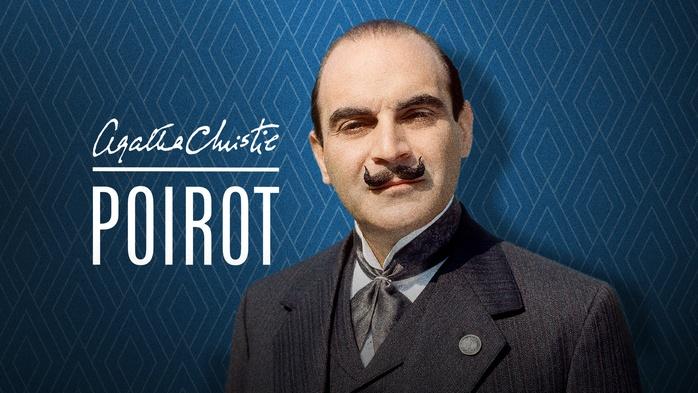




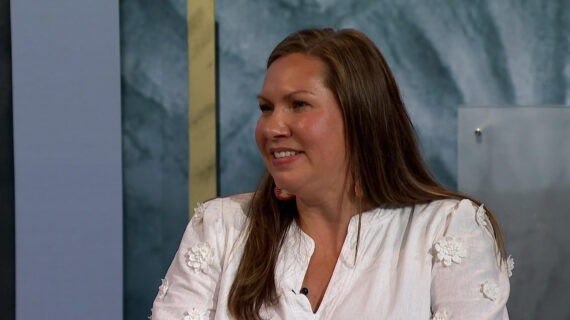
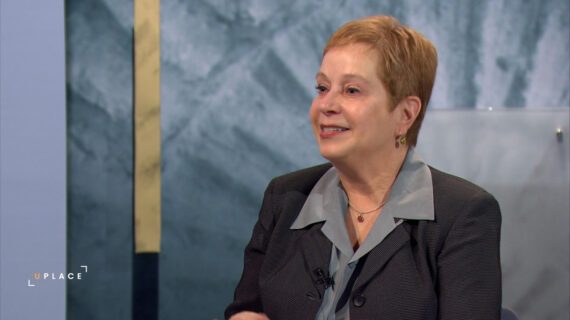

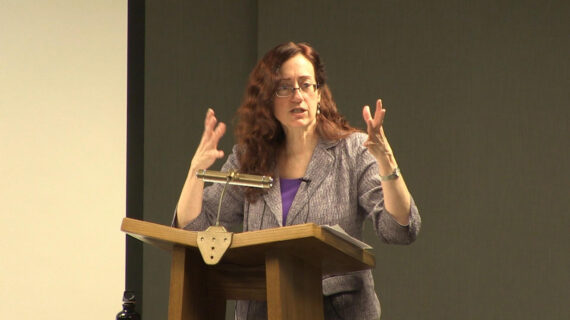



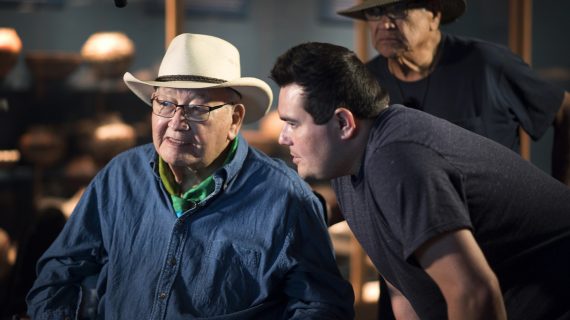


Follow Us